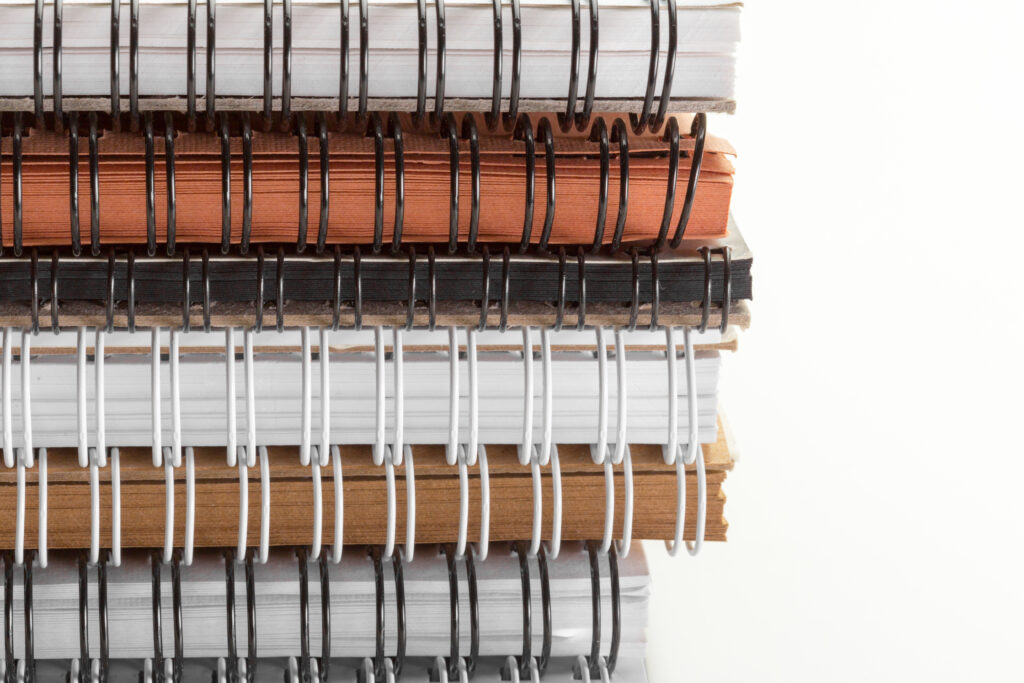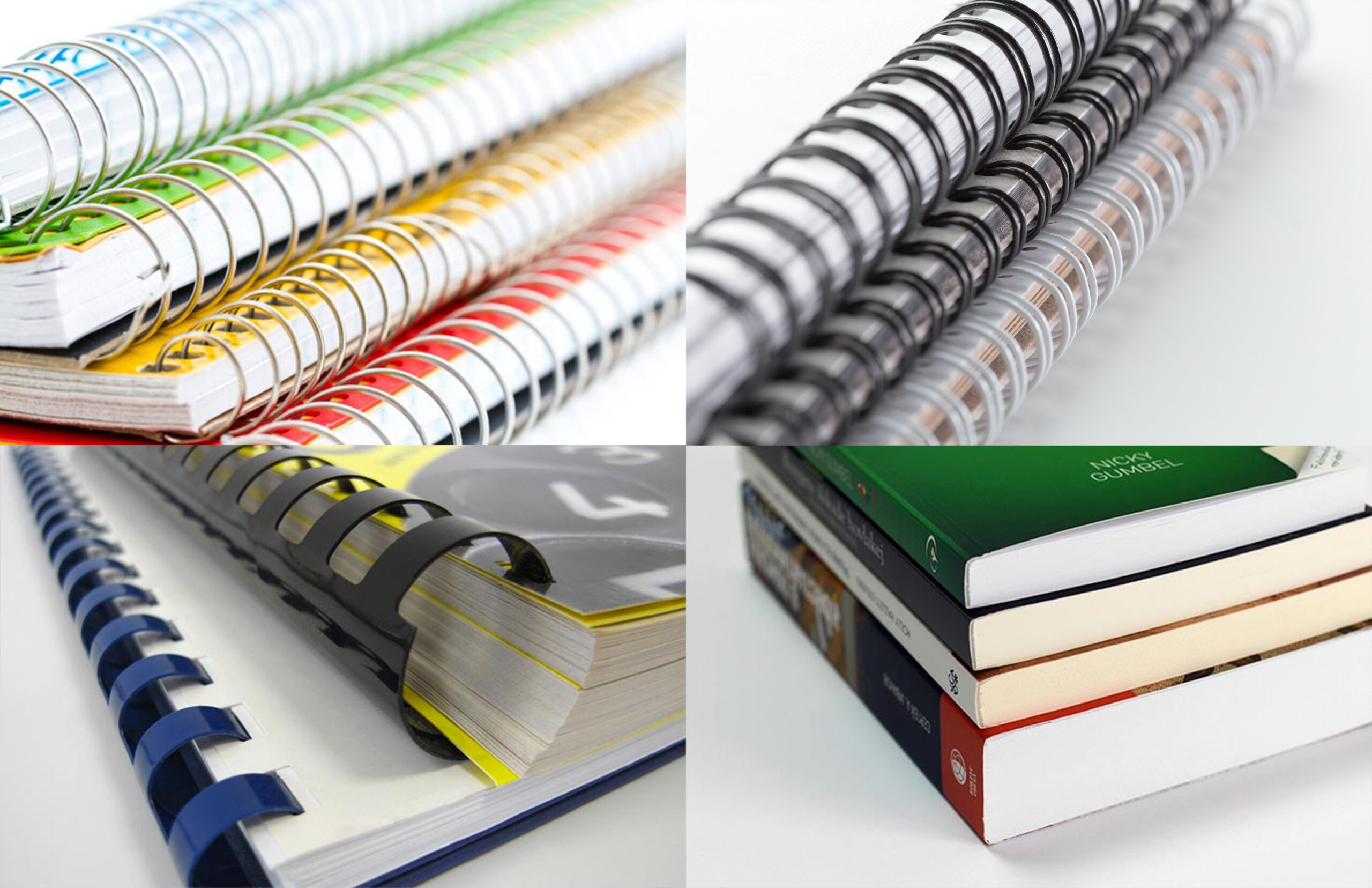
Importance of Choosing the Best Binding Method
In the intricate world of document presentation and organization, the choice of a binding method plays a pivotal role in shaping the effectiveness and visual appeal of the final product. The importance of selecting the right binding method transcends mere aesthetics; it directly influences functionality, durability, and the overall impression conveyed to the audience. Whether you’re binding reports, manuals, or promotional materials, the method chosen becomes an integral part of the document’s identity. This article delves into the profound significance of opting for the best binding method, exploring how this decision impacts the user experience, longevity, and overall success of your printed materials.
What is Binding?
Binding is the process of securing and organizing loose sheets or multiple pages into a cohesive and functional form. This process transforms individual sheets into a unified document, providing structure, durability, and ease of handling. Various binding methods exist, ranging from traditional techniques such as stapling and stitching to more advanced methods like spiral binding, comb binding, wire binding, and perfect binding. The choice of binding method depends on factors such as the type of document, its intended use, and the desired aesthetic. Ultimately, binding enhances the presentation, usability, and longevity of printed materials, making them more accessible and professional.
What are the Different Binding Methods?
Several types of binding methods are available, each offering distinct advantages and suitable for specific applications. Here’s an overview of some common binding methods:
- Saddle Stitching:
- Description: Folded sheets are stapled along the spine.
- Applications: Magazines, booklets, brochures.
- Perfect/Soft Cover Binding:
- Description: Pages are glued together at the spine with a flexible adhesive.
- Applications: Softcover books, catalogues, thicker magazines.
- Coil/Spiral Binding:
- Description: Pages are bound using a plastic or metal coil that threads through small holes along the edge.
- Applications: Notebooks, cookbooks, manuals, planners, reference materials, presentations.
- Comb/Cerlox Binding:
- Description: Plastic comb-like spines are inserted through punched holes.
- Applications: Reports, presentations, training manuals.
- Wire/Wire-O Binding:
- Description: Double-loop wire binds the pages together through a series of holes.
- Applications: Calendars, notebooks, professional presentations.
- Hardcover or Case Binding:
- Description: Pages are sewn together and attached to a rigid cover.
- Applications: High-quality books, albums, premium presentations.
The choice of binding method depends on factors such as the type of document, the number of pages, intended use, and desired aesthetics. Each method offers its own set of benefits in terms of durability, flexibility, and presentation.
Why Choosing the Best Binding Method Important?
Choosing the best binding method is of paramount importance as it directly influences the functionality, durability, and overall impact of your printed materials. Here’s why selecting the right binding method is crucial:
- Durability and Longevity:
- The binding method determines how well a document withstands wear and tear. Choosing a durable binding method ensures that your materials endure frequent handling, preserving their integrity over time.
- Professional Presentation:
- The right binding method contributes significantly to the overall aesthetics of your documents. A well-chosen binding method enhances the professional appearance of your materials, leaving a positive impression on your audience.
- User Experience:
- The ease with which individuals can interact with your documents is influenced by the binding method. A suitable binding ensures that pages turn smoothly, facilitating a seamless and enjoyable user experience.
- Functionality and Practicality:
- Different documents serve various purposes, and the binding method should align with the intended use. Whether it’s a lay-flat design for manuals or a more formal look for reports, the chosen method should meet the functional requirements of the document.
- Versatility and Customization:
- The right binding method allows for customization to meet specific needs. Whether it’s the ability to add or remove pages easily, incorporate different cover materials, or choose from various colours, the binding method should offer flexibility.
- Cost Efficiency:
- Selecting an appropriate binding method helps optimize costs. Some methods are more cost-effective for large print runs, while others may be ideal for smaller, specialized projects. Matching the method to the project size and requirements ensures cost efficiency.
- Brand Image and Identity:
- The binding method contributes to the overall branding of your materials. It reflects your attention to detail and commitment to quality, reinforcing a positive brand image and identity. Getting the best binding covers also elevates your brand image.
- Document Security:
- Depending on the nature of your documents, security may be a concern. Certain binding methods offer added security features, preventing unauthorized access or tampering.
In summary, choosing the binding method is a critical decision that impacts how your materials are perceived, utilized, and preserved. By carefully considering the characteristics and requirements of your documents, you can ensure that the chosen binding method aligns seamlessly with your goals, contributing to the overall success of your printed materials.
Examples of Best Binding Machines
Here are some of the best binding machines:
Best Coil Binding Machines
- Coilbind S12 Spiral Coil Binding Machine
- Coilbind S-15 Manual Spiral Coil Binding Machine
- CoilBind S25A Spiral Coil Binding Machine
- Akiles Duo Mac 321
- SUPU PC360E Electric Coil Binding Machine 14″
Best Comb Binding Machines
- C-12 Comb Binding Machine
- CombBind C20A Comb Binding Machine
- Akiles Duo Mac 321
- CombBind C20A Comb Binding Machine
Best Wire Binding Machines
- WireBind W20A Wire Binding Machine
- Supu CW430E Electric Wire-o Punching Machine with Manual Closer
- WireMac-E31 Akiles Electric Punch Manual Wire
- Akiles WBM532 Modular Wire Binding Machine
- Akiles FlexiCloser 2 Wire Binding Machine
Perfect Binding Machines
- Boway Perfect Binder BW-JB2
- Boway Perfect Binder BW-920V
- Sysform 50A Professional Perfect Binding Machine
- Sysform 50B Professional Perfect Binding Machine
Saddle Stitchers
- Sysform 106E Electric Stapler Flat Saddle
- Salco Rapid 106 R106E Electric Stapler
- DeLuxe Book Stitchers M17-AST
- MBM stitchmaster wire stitcher
- BM-35 Tabletop Booklet Maker with Square Back Feature
In essence, the importance of selecting the best binding method cannot be overstated. It goes beyond the technical aspects of securing pages together; it shapes the very essence of your printed materials. Choosing the right binding method becomes important in conveying durability, professionalism, and functionality. It enhances the user experience, contributes to the document’s longevity, and reflects your commitment to quality. As you explore the different binding options, remember that the binding method you choose is more than a practical necessity; it is a powerful design element that adds value, character, and impact to your printed materials. Embrace the opportunity to elevate your documents through thoughtful binding, ensuring that they not only serve their purpose but leave a lasting impression on those who engage with them.
Are you ready to enhance the presentation and durability of your printed materials? Take the next step towards achieving professional, long-lasting documents by investing in the best binding machines for your business. Whether you’re running an office, a binding service, or a printing business, the right binding equipment can make all the difference in elevating the quality of your products. Contact us today to explore our range of binding machines and take your business to the next level.









